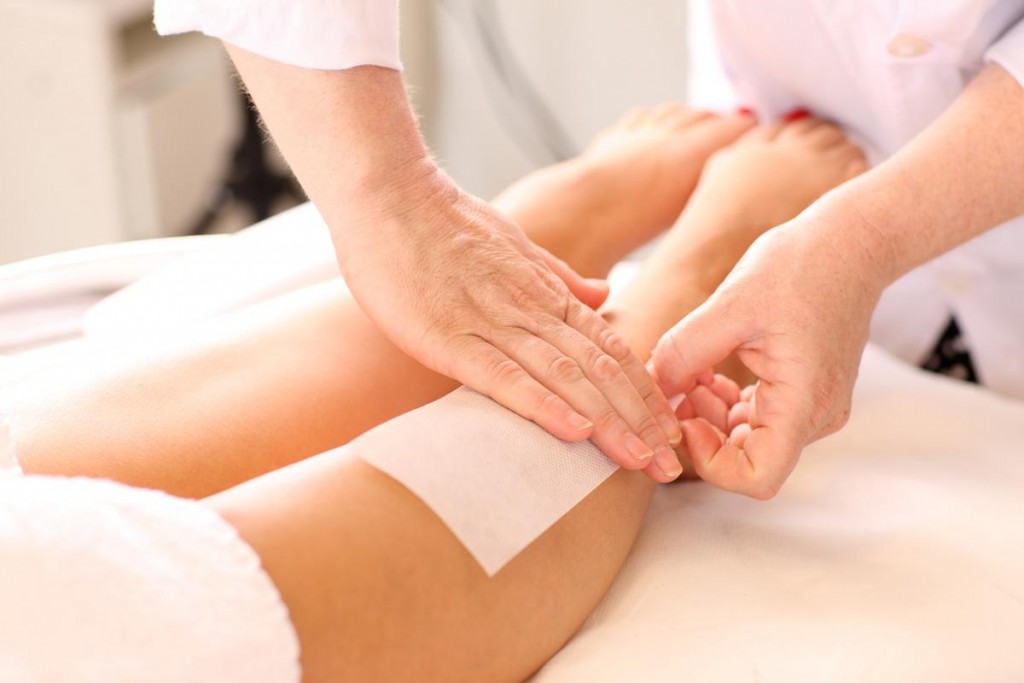The thought of pulling hair out from the roots is not a welcome idea for many people. Even for those with high thresh holds for pain, this can be downright painful. This does not come as a surprise since this particular method of hair removal entails removing the hair from where pain receptors are also present.
At the same time, a very thin layer of skin may also be taken out during the process. Despite this, many people still opt to get waxed because of the favorable results. The good news is that there are ways to help ease the pain of the procedure.
- Take Some Pain Reliever – With hair being pulled out where pain receptors are, it makes sense to block of the transmission of pain from these. Take an over the counter pain reliever thirty minutes to an hour before you plan to wax. Non-steroidal anti-inflammatory drugs (NSAIDS) like ibuprofen are a good choice since these can help deal with inflammation as well. However, for those who are allergic, or cannot take these analgesics like acetaminophen or paracetamol may work as well.
- Use a Topical Numbing Cream – For those who are really sensitive, a topical numbing cream can help ease the pain. This can be applied about thirty minutes before the procedure begins. Of course, this should not be used without first consulting a physician. Being a type of medication, it should be used with caution. Some people may be allergic to ingredients in numbing creams and can have adverse reactions to it. If you are taking any medication or have a medical condition, it is also best to consult a doctor before using this.
- Exfoliate before the Procedure – Sometimes waxing can hurt even more if hair is trapped underneath the skin’s surface. Giving the area to be waxed a good scrub down can help loosen hair that is embedded. Keep in mind though, that exfoliating should be done in moderation. Do it only to help loosen dead skin cells and hair, to make pulling easier. Avoid scrubbing the skin excessively, because this will only irritate it and make it more sensitive. At the same time, do not exfoliate at least 24 hours after the waxing procedure.
- Breathe Right – The common reaction people have when getting waxed is to hold their breath while the hair is being yanked out. Contrary to popular belief, this does not alleviate pain. Rather than doing this, try taking a deep breath before the hair is pulled out. Slowly exhale through the mouth while the hair is being pulled. This helps the body to relax more and helps relieve pain. It is a similar breathing method taught and used during childbirth.
- Avoid Waxing before Your Period – If your period is just around the corner, it is better to avoid any waxing procedures first. Thanks to lower estrogen and higher androgen levels, oil production is increased and pores can be blocked. Not to mention that testosterone and progesterone increase causing pores to enlarge and tightening the grip on hair as well. All this can make it more difficult to pull out hair and makes the skin more sensitive on the whole.
- Clean Up Your Pores – As mentioned, pulling hair out can be more difficult to pull out when pores are tight. Although closed and open pores are a myth (there are no muscles on these to help them dilate and contract), you can de-clog them. Get rid of oil and dirt that can hold down hair up by taking a hot shower before you go for waxing. The heat and the steam will help melt down any oil that anchors the hair root to the skin even more.
- Wear Comfortable Clothing – The pain of waxing does not end after hair is taken out. As a matter of fact, many experience discomfort even a few hours after the procedure. This is due to the increased sensitivity of the skin. One way to avoid irritating the skin and experiencing more discomfort is by wearing lose and soft clothing. Anything that restricts can rub on the skin and aggravate irritation. Cotton fabric is a good choice to have on since this is light and soft even when it comes in contact with the skin.
- Get an Ice Pack – Skin sensitivity can vary from person to person. Some people are simply more sensitive even after following pre-cautions. If you are among these people, grab an ice pack and soothe your skin with it. The coolness from this can help reduce swelling and inflammation, as well as ease redness. It can also prevent heat from building up and provide a temporary numbing sensation. Just make sure that the ice pack you use is clean to avoid any problems with bacteria entering the pores.
